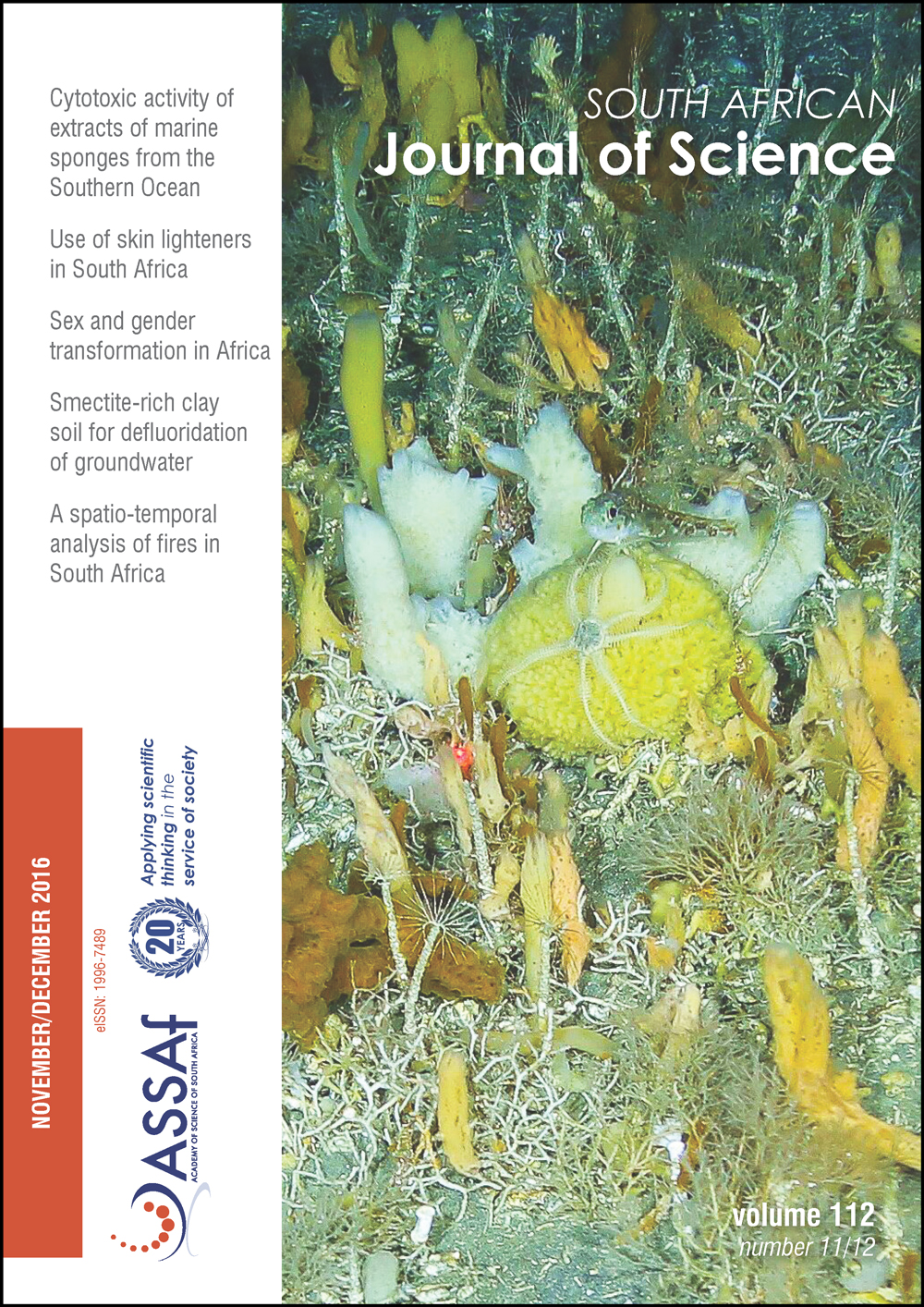A morphometric analysis of hominin teeth attributed to Australopithecus, Paranthropus and Homo
DOI:
https://doi.org/10.17159/sajs.2017/20160136Keywords:
Plio-Pleistocene, molar variability, taxonomy, log sem, analogue speciesAbstract
Teeth are the most common element in the fossil record and play a critical role in taxonomic assessments. Variability in extant hominoid species is commonly used as a basis to gauge expected ranges of variability in fossil hominin species. In this study, variability in lower first molars is visualised in morphospace for four extant hominoid species and seven fossil hominin species. A size-versus-shape-based principle component analysis plot was used to recognise spatial patterns applicable to sexual dimorphism in extant species for comparison with fossil hominin species. In three African great ape species, variability occurs predominantly according to size (rather than shape), with the gorilla sample further separating into a male and a female group according to size. A different pattern is apparent for the modern human sample, in which shape variability is more evident. There is overlap between male and female modern humans and some evidence of grouping by linguistic/tribal populations. When fossil hominin species are analysed using equivalent axes of variance, the specimens group around species holotypes in quite similar patterns to those of the extant African great apes, but six individual fossil molars fall well outside of polygons circumscribing holotype clusters; at least three of these specimens are of interest for discussion in the context of sexual dimorphism, species variability and current species classifications. An implication of this study is that, especially in the case of modern humans, great caution needs to be exercised in using extant species as analogues for assessing variability considered to be a result of sexual dimorphism in fossil hominin species.
Significance:- Caution should be exercised in using modern analogue species as proxies for fossil hominin species variability.
- Exceptionally wide ranges of molar variability between certain fossil hominin specimens currently allocated to the same species might indicate possible misclassification.
- Molar morphology in gorillas tends to reflect primarily size, rather than shape, variability between the sexes, which is a consideration in the context of assessing possible sexual dimorphism in fossil hominin species.
Downloads
Published
Issue
Section
License

All articles are published under a Creative Commons Attribution 4.0 International Licence
Copyright is retained by the authors. Readers are welcome to reproduce, share and adapt the content without permission provided the source is attributed.
Disclaimer: The publisher and editors accept no responsibility for statements made by the authors
How to Cite
- Abstract 477
- PDF 597
- EPUB 171
- XML 220
- Supplementary Material 178












.png)